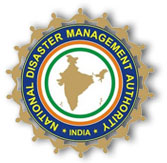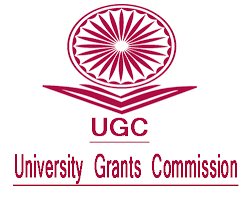Indian start-ups showcase prowess in Africa
Gadkari takes road trip from San Francisco to LA: experiences latest techniques in Highway engineering & Road safety
Minister of Road Transport, Highways & Shipping Shri Nitin Gadkari undertook a coastal drive by road from San Francisco to Los Angeles to gain first-hand experience of the latest techniques in road engineering, highway construction, road signage and other effective measures for road safety along this prestigious ocean route. On the last leg of his week-long official visit to the US, Shri Gadkari left San Francisco early in the morning yesterday by road and completed the journey in ten hours covering a distance of 800 Kms in the winding hilly terrain, thick forests and some desert patches along the west coast overseeing the pacific ocean.
Shri Gadkari said the idea behind undertaking this tedious journey was to understand the technology, machinery and construction material being used by the transportation department and other local agencies in the US in constructing and maintaining the amazing overhangs and cliffs along the difficult coastline and the innovative engineering involved in the improvement of projects both on and off the highway system. The Road Transport & Highways Minister is currently engaged in constructing national highways in the difficult terrains of Jammu, Kashmir and Ladakh, the North-Eastern region and Himalayas- from Pithoragarh to Mansarovar and from Haridwar to Gangotri, Yamunotri, and Badrinath & Kedarnath.
Shri Gadkari said he was impressed by the tunneling technology and the lovely scenic spots along the curves on the highways and coastal roads which have been converted into centres of tourist attraction with road side amenities like restaurants, shops, entertainment facilities and camping sites. He was told that most of California’s highways are more than a half-century old and carry nearly half of the nation’s goods traffic. Heavy loads pound California’s highways more than any other state and sustain 190 billion vehicle kms travelled in 2015
Shri Gadkari appreciated the projects being undertaken for repairing bumpy pavements, preserving roads that are in good condition from deteriorating and upgrading bridges to make them safer and stronger. He also witnessed widening of hard shoulders and installation of drainage, relocation of utility, and realignment of local road intersections along the route he travelled along with a team of senior officials from his ministry.These highways and coastal roads are regularly maintained and upgraded with crash barriers, signage to make all weather travel safe, Shri Gadkari was told.
The Minister also witnessed improved safety measures such as metal screens and mesh along the hilly terrain to prevent landslides hitting the roads, road markings, proper signage with adequate warning signals. SOS call boxes being run with solar panels.He was informed that maintenance staff works day and night to keep the highways clear and safe for all motorists. They do patching pavement, replacing signs, striping lanes, clearing vegetation, removing trash and graffiti.
Suresh Prabhu dedicates newly developed Deen Dayalu Coach to the Nation
Indian Railways news update: Minister of Railways Shri Suresh Prabhu dedicated the newly developed Deen Dayalu Coach to the nation at a simple programme held at New Delhi Railway Station. Minister of State for Railways & Minister of State for Communications (Independent Charge) Shri Manoj Sinha and Minister of State for Railways Shri Rajen Gohain were specially present to grace the occasion. Member Mechanical, Railway Board Shri Hemant Kumar, General Manager, Northern Railway Shri A. K. Puthia, Divisional Railway Manager, Delhi Division Shri Arun Arora and other Railway Board Members and senior officials of Northern Railway were among those present on the occasion.
The introduction of Deen Dayalu coaches was announced by Shri Suresh Prabhu in Rail Budget 2016-17. In compliance to Budget commitment, first Deen Dayalu Coach No. SR16418 has been manufactured by Integral Coach Factory/Chennai. Following additional amenities have been provided in Deen Dayalu coach:
- Water filtration system to provide potable water.
- Provision of cushioned luggage racks.
- Provision of additional hand hold in doorway area.
- Provision of coat hooks.
- Provision of bio-toilets.
- Toilet occupation indication display board.
- Enhanced mobile charging facility.
- LED lights.
- Fire extinguishers with anti-theft arrangement.
- Enhanced capacity dustbins.
- Water level indicator
- Interior paneling with Aluminium composite panels.
- Exterior painting with orange color bands (Z-shaped) and Anti-Graffiti coating.
In the current year, around 700 number of Deen Dayalu coaches have been planned for manufacturing and putting them into service. Though the facilities have been enhanced, however, fares have been kept same.
IndianBureaucracy.com wishes the very best.
Talking technology in common man’s lingo…in the words of a Bureaucrat
Public speaking is all about establishing connect with the audience, striking a chord, matching frequency with that of listeners and attaining complete synchronization. That requires speaker to ascertain the profile of the target audience and assess their capacity and capability and wavelength.
The world is fast going technical and there is no escape from this . The need of the hour is to demystify technology and take it to the masses in order to make everyone a part of the wonderful journey towards transformation. Common man will not and need not understand the complex concepts of algorithm. Technology for them is a simple tool , a medium to make lives easier and better . And it is here where Public Speakers can render great service by popularizing and propagating technology in the language of the proverbial Aam Aadmi . Talking technology in the language of non-technical people by using analogies , anecdotes and real-life examples is the answer to fill the knowledge-gap .
Simplicity in expression is the not the easiest of things to accomplish. Contrary to the popular belief, it can come only with the best of understanding and mastery in communication skill . There is a tendency among public speakers to sound unique, uncommon and different and in an effort to accomplish this objective they usually tend to sound technical, use high sounding ornamental words, use uncommon idioms, jargons and expressions leaving everyone around high and dry . Simplicity in narration comes from clarity in thought . Mahatma Gandhi’s writing is one such glaring example . The world largely remained deprived of the gems of knowledge and wisdom from Vedas and other great scriptures due to conscious attempt by the educated elite to confine it to the language they only understood i.e. Sanskrit . The result is there for everyone to see . The growth and dissemination of technology must not meet the same fate . And that casts a great responsibility on Public Speakers to not let that happen .
About the Author: Shri Mithileshwar Thakur is presently posted with the Ministry of Commerce and Industry , Govt of India at New Delhi and the views expressed are his own. Shri Thakur is a Gold Medallist in B. Tech (Mechanical Engineering) and recipient of merit scholarship and topper of university /board at all levels.
Prior to joining Indian Civil Service, he has worked as member of IRS in Indian Railways and as Engineer in well reputed companies like NTPC, Tata Motors and Tata Steel. He has served as visiting faculty to many reputed institutions like IIT, Kharagpur; National Academy of Customs, Excise and Narcotics; Indian Institute of Foreign Trade; RBI officers ‘Training Institute ; Narsee Monjee Institute of Management to name a few. . His areas of interest also include Intellectual Property Right issues, Cyber laws , regularly contributes to the reputed magazines and newspapers. He has presided over many functions and seminars organised by reputed Chambers of Commerce & Industry like FICCI, CII, FIEO, Indian Chamber of Commerce etc. He had been Government nominated member of the working group set up by the Govt for Local Currency Trade. He has also been a Key Speaker and panellist in many important forums and has also represented the Government outside India on important platforms.
Ban on non-CAT III compliant small Aircrafts
Minster of State for Civil Aviation, Shri Jayant Sinha has informed that as per direction issued by the Directorate General of Civil Aviation (DGCA), non CAT-III compliant aircraft will have to be rescheduled between 1000 hours to 2000 hours during the period with low visibility weather forecast, keeping a view to minimize the inconvenience to traveling passengers and ensure safety of operations during the Low Visibility period.
As per Summer Schedule- 2016 following 19 cities are connected to Delhi by small aircrafts namely Surat, Rajkot, Kullu, Allahabad, Gorakhpur, Dharamsala, Dehradun, Pant Nagar, Lucknow, Jaipur, Indore, Chandigarh, Jodhpur, Amritsar, Varanasi, Udaipur, Jabalpur, Bhubaneswar and Port Blair.
With repeal of Air Corporation Act in March 1994, the Indian aviation was totally deregulated. Airlines are free to induct capacity with any aircraft type, free to select whatever markets and network they wish to service and operate. In this regard Government has laid down route dispersal guidelines with a view to achieve better connectivity of air transport services taking into account the need for air transport services of different regions of the country. It is, however, up to the airlines to provide air services to specific places depending upon the traffic demand and commercial viability subject to compliance of the route dispersal guidelines. The direction issued by DGCA on low visibility period operations is effective as on date which also need to be accounted for operation to/from Delhi during Winter/fog season.
National Disaster Plan for Animals
Minister of State for Agriculture and Farmers Welfare, Shri Sudarshan Bhagat has informed that after wide ranging consultation and elaborate discussion with different stakeholders such as National Disaster Management Authority, National Disaster Response Force, National Institute of Disaster Management, various State Governments and knowledge Institutions, the Department of Animal Husbandry, Dairying & Fisheries has prepared and launched Disaster Management Plan (DMP) for protecting animals and preventing and mitigating loss of livestock resources during various disasters.
DMP is divided into three parts a) Pre-disaster preparedness, b) Disaster response and c) Post-Disaster Plan. Pre-disaster preparedness includes detailed action plan relating to dissemination of early warning, identification of vulnerability amongst livestock, animal vaccination, feed and fodder supply and capacity building of different stakeholders in disaster management etc. Disaster response component includes strategy/action plan relating to effective and prompt response, rescue of livestock, feed & fodder supply, measures against epidemics and diseases and maintenance of Sanitation etc. Post disaster component include strategy for treatment of sick animals, disease surveillance, disposal of carcass, restoration and restocking of livestock population.
DMP aims to supplement the efforts of States/UTs in managing disasters and lays down the broad guidelines for management of animal during disasters like drought, floods, cyclones, earthquakes and other man-made disasters etc. in the states/UTs.
Finalisation of purchase of Rafale Jets
Defence Minister Shri Manohar Parrikar has informed that as per the India-France Joint Statement issued by the two countries during the Prime Minister’s visit to France, Government of India conveyed to the Government of France that in view of the critical operational necessity for Multirole Combat Aircraft for Indian Air Force (IAF), Government of India would like to acquire 36 Rafale jets in fly-away condition.
Both the sides also agreed to conclude an Intergovernmental Agreement (IGA) for supply of the aircraft. A Negotiating Team has been constituted to negotiate the terms and conditions of the procurement of 36 Rafale jets and recommend a draft agreement. The Negotiations are underway and IGA & Offset Contract are yet to be finalized. The details including transfer of technology through offsets will emerge after the negotiations are completed.
The Rafale aircraft being procured will have advanced features like Advanced Electronically Scanned Array Radar, mid-air refuelling and advanced Electronic Warfare equipment as part of its design.
IndianBureaucracy.com wishes the very best.
Noble Gesture by NALCO Mahila Samiti
Members of Nalco Mahila Samiti, Bhubaneswar, led by Smt. Preeti Roy, President, visited ‘Sakha’, an old age home at Cuttack . The Samiti donated two steel almirahs and distributed towels to 30 inmates, besides interacting with them. Among others, Smt. Trupti Dash, Secretary, Smt. Ila Mohanty, Advisor, Smt. Namita Sahoo, Joint Secretary, Smt. Pratibha Mishra & Smt. Urmi Patra were notably present on the occasion.
IndianBureaucracy.com wishes NALCO the very best.
Autonomous status to colleges granted with the highest grade
The University Grants Commission(UGC) has informed that it has decided, in its 514th meeting, held on 12thApril, 2016, to grant autonomous status to colleges accredited by the National Assessment and Accreditation Council (NAAC) without on-the-spot inspection by an Expert Committee with the condition that a college which is accredited with the highest grade in two consecutive cycles and also secures the highest accreditation grade in the third cycle from NAAC will be granted autonomous status provided it obtains no objection certificate from the affiliating university and provided it also adheres to UGC’s Regulations viz. (a) curbing the menace of ragging in Higher Education Institutions Regulations 2012; (b) UGC (Promotion of Equity in Higher Educational Institutions) Regulations 2012; (c) UGC (Grievance Redressal) Regulations 2012 etc. in letter and spirit.
The UGC provides General Development Assistance (GDA) to Universities and Colleges, declared fit under section 12B of UGC Act, 1956 to receive grants, for improvement in their infrastructure and other facilities and thereby attain higher quality levels. Under the scheme of Rashtriya Uchchatar Shiksha Abhiyan (RUSA), Central assistance, through the States, is provided to Colleges approved by the Project Approval Board (PAB) of RUSA, based on the State Higher Education Plan (SHEP), for improvement in their infrastructure.
The details of the Colleges supported through RUSA infrastructure grants is at http://mhrd.gov.in/project-approval-board
Repeated stimulation treatment can restore movement to paralyzed muscles
Summary:A new patient study could open a new opportunity to rehabilitate patients with spinal cord damage, say investigators. This study represents the first time that attempts were made to rehabilitate patients paralysed as a result of a spinal cord injury through long-term stimulation treatment of this type.
Conducted at the BioMag laboratory at the Helsinki University Hospital, a new patient study could open a new opportunity to rehabilitate patients with spinal cord damage.
Dr Anastasia Shulga, a medical doctor specialising in neurology, led a study in which two patients with spinal cord injuries received a form of treatment that combined transcranial magnetic stimulation with simultaneous peripheral nerve stimulation given repeatedly for nearly six months. This was the first time that attempts were made to rehabilitate patients paralysed as a result of a spinal cord injury through long-term stimulation treatment of this type.
Both patients who participated in the study had spinal cord injuries caused by trauma. One patient was paraplegic, paralysed from the knees down, and the other was tetraplegic, with some voluntary movement of the hands but no capacity to grasp. Both patients had been injured more than two years ago and had received conventional rehabilitation treatments throughout their recovery, and continued to do so during the stimulation treatment.
After approximately six months of the stimulation treatment, the paraplegic patient could bend both ankles, and the tetraplegic could grasp an object.
“We observed strengthened neural connections and partial restoration of movement to muscles which the patients were previously entirely unable to use,” explains Dr. Shulga.
The movement restored during the treatment was still present a month after the stimulation treatment had ended. One of the patients is participating in a further study in which stimulation is given more extensively and for an even longer period.
Dr. Jyrki Mäkelä, head of the Bio Mag laboratory, points out that rehabilitation of patients with chronic spinal cord injuries is highly challenging, and new treatment methods are sorely needed:
“This is a case study with two patients only, but we think the results are promising. Further study is needed to confirm whether long-term paired associative stimulation can be used in rehabilitation after spinal cord injury by itself and, possibly, in combination with other therapeutic strategies.”
More: Science
Black money scheme: Government extends payment deadline to Sept 2017
City birds again prove to be angrier than rural birds
Summary:New observations on urban versus rural birds shed light on the effects of human population expansion on wildlife, say authors of a new report.
No need to head to the movie theatre or download the video game app: Angry Birds can be found right in your backyard this summer–if you live in the suburbs, that is.
Virginia Tech researchers recently found that birds that live in suburban areas exhibit significantly higher levels of territorial aggression than their country counterparts. The results were recently published in Biology Letters.
“A possible reason for this is that these birds have less space but better resources to defend,” said Scott Davies, a postdoctoral associate in biological sciences in the College of Science. “Living near humans provides better food and shelter, but it also means more competition for these limited resources.”
Davies and co-author Kendra Sewall, an assistant professor of biological sciences in the College of Science, measured territorial aggression in 35 urban and 38 rural male song sparrows at three rural and three urban sites in the New River Valley during the spring of 2015.
The Virginia Tech and Rad ford University campuses served as the (sub)urban sites due to their levels of human impact. Rural sites included Kentland Farm and Heritage Park. In these settings, the researchers played a recording of a male song sparrow and observed how the territory-holding birds responded to a simulated intrusion from a neighbour.
Campus birds showed a higher level of aggression: they approached and remained near the speaker, flapped their wings furiously, engaged in loud singing and then began to produce ‘soft song’–a term that researchers use to describe the quiet, garbled noise that a bird makes, which is predictive of an impending attack.
Though rural birds still responded to a song intrusion, they did not respond as vigorously.
The researchers placed small leg bands on the birds to identify individuals, and recorded each individual’s responses twice, several weeks apart. The suburban birds were more territorial on both occasions, showing that their increased aggression persists throughout a breeding season.
The researchers’ observations shed light on the effects of human population expansion on wildlife. The world population is projected to reach 9.6 billion by 2050, according to the United Nations, increasing by more than 2 billion people. Though many animals avoid habitats that are impacted by humans, some species can adjust and live in suburban and even urban habitats.
“This finding supports past research showing that urban birds are more aggressive in defending their territories,” said Dr. Kiki Sanford, neurophysiologist and host of the This Week in Science and Stem Cell podcasts, who was not involved in the study. “We need to understand widespread behavioural differences between various species of urban and rural bird populations to get an idea of how urbanisation will affect their survival and diversity in the future. Testosterone and population density are the usual predictors for aggression, but there are other influential factors like increased food availability in urban environments that need to be examined.”
Ongoing work in the Sewall lab addresses how expanding sub urbanisation impacts bird species, permitting them to adjust and persist despite changes in their habitat. Sewall is affiliated with the Fralin Life Science Institute and the Global Change Center at Virginia Tech.
“Predicting the impact that human population growth will have on wildlife requires studying the species that adjust and persist in human impacted habitats,” said Sewall. “Suburban sprawl is a primary form of human habitat change and though many species can survive in our backyards, their behaviour and physiology may change to cope with shifts in resources and with new disturbances.”
More: Science












